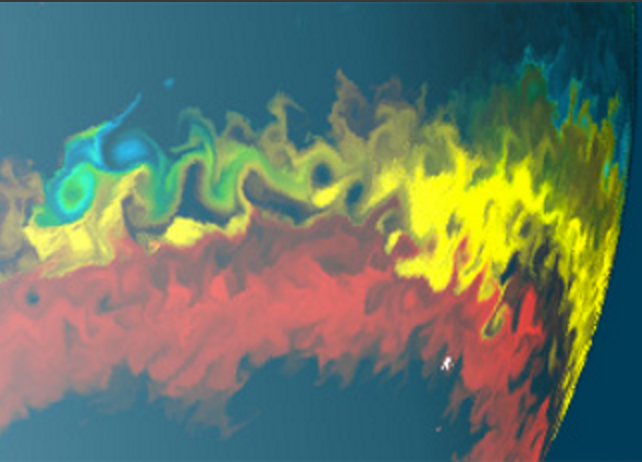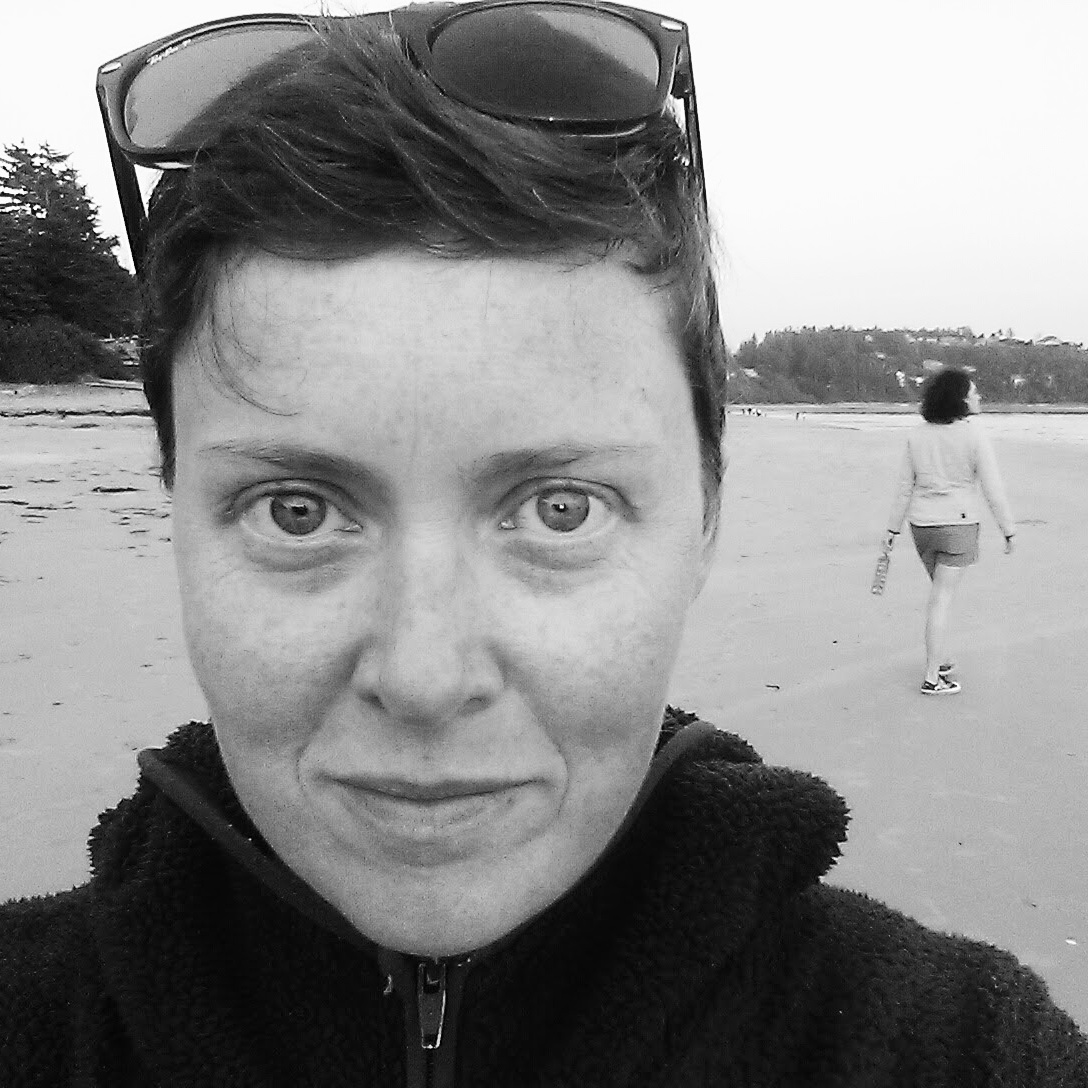Story by Helen Hill
This month we spotlight research from MIT’s Darwin Project exploring how changes in spatial resolution impact emergent biogeochemistry and phytoplankton community structure in their work using MITgcm and the biogeochemical models they have built to surround it.
It’s been a decade since the inception of the MIT Darwin Project, an alliance between physical oceanographers, biogeochemists and marine microbiologists at the Massachusetts Institute of Technology (MIT). The goal of Darwin remains to couple state of the art physical models of global ocean circulation with biogeochemistry and genome-informed models of microbial processes to understand the interplay between different elements of the marine ecosystem leading to observed balances between physiology and the marine environment.
Now, in a paper published in the journal Biogeosciences Darwin Project researchers report on their work weighing biogeochemical versus ecological consequences of the way in which ocean physics is represented in their general circulation/ biogeochemical hybrid modeling. A big part of the Darwin Project’s tool kit is the Massachusetts Institute of Technology General Circulation Model (MITgcm.) Darwin researchers have been leveraging that model from the start, building their biogeochemical models around an MITgcm core, while also making great use of datasets from the Estimating the Circulation and Climate of the Ocean (ECCO) Consortium, ECCO code itself being based on the MITgcm.
The paper’s first author is Sophie Clayton a graduate of the MIT-WHOI Joint Program and a former student in the Follows Group at MIT. She is joined by Stephanie Dutkiewicz, Oliver Jahn, Christopher Hill, and Michael Follows from MIT as well as Patrick Heimbach now at the University of Texas at Austin.
Clayton et al. presents a systematic study of the differences in biogeochemistry (in particular primary production) and phytoplankton community structure generated by coupling the same ecological-biogeochemical model to a 1 degree, coarse resolution, and a 1/6 degree, eddy-permitting, global circulation model.
To the team’s surprise they found that this actually has little impact on the modeled phytoplankton community, with the same phenotypes dominating in both cases. Conversely large regional and seasonal variations in primary production, phytoplankton and zooplankton biomass were evident.
The researchers found that the depths of their subtropical mixed layers were, on average, deeper in the eddy-permitting model leading to higher nutrient supply supporting increases in primary production and phytoplankton biomass.
They also found that at higher latitudes differences in winter mixed layer depths, the timing of the onset of the spring bloom, and vertical nutrient supply conspired to lower primary production in the eddy-permitting case.
However the team observed this did not drive a decrease in phytoplankton biomass but did result in a lower zooplankton biomass. To explain this perhaps counterintuitive observation the authors turned to resource competition theory, which suggested to them that the similarities and differences they observed were the consequences of changes in the regional and seasonal nutrient supply and light environment, mediated by differences in the modeled mixed layer depths.
To find out more about this work contact Sophie
About the Researchers:
Sophie Clayton is a Postdoctoral Research Associate in the Armbrust Lab at the University of Washington. She is broadly interested in understanding the role of ocean physics in setting patterns of phytoplankton diversity and community structure, using a combination of numerical modeling, data analysis and seagoing research. When she is not busy trying to understand how the ocean works, she says she enjoys scuba diving, exploring Washington State by motorbike, and knitting socks.
This Month’s Featured Publications:
- Sophie Clayton, Stephanie Dutkiewicz, Oliver Jahn, Christopher Hill, Patrick Heimbach, and Michael Follows (2017), Biogeochemical Versus Ecological Consequences of Modeled Ocean Physics, Biogeosciences, 14, 2877-2889, doi: 10.5194/bg-14-2877-2017
Other New Publications this Month:
Eleni Anagnostou,Areti Gianni, Ierotheos Zacharias (2017), Ecological modeling and eutrophication—A review, Natural Resource Modeling, doi: 10.1111/nrm.12130
Amélie Bouchat and Bruno Tremblay (2017), Using sea-ice deformation fields to constrain the mechanical strength parameters of geophysical sea ice, Journal of Geophysical Research – Oceans, doi: 10.1002/2017JC013020
Sandro Carniel, Judith Wolf, Vittorio E. Brando, and Lakshmi H. Kantha (2017), Preface: Oceanographic processes on the continental shelf: observations and modeling, Ocean Sci., 13, 495–501, doi: 10.5194/os-13-495-2017
Karel Castro-Morales, Robert Ricker, Rüdiger Gerdes (2017), Regional distribution and variability of model-simulated Arctic snow on sea ice, Polar Science, doi: 10.1016/j.polar.2017.05.003
Paola Cessi and C. S. Jones (2017), Warm-route versus cold-route interbasin exchange in the meridional overturning circulation, Journal of Physical Oceanography, doi: 10.1175/JPO-D-16-0249.1
Andrea Cimatoribus, Ulrich Lemmin, Damien Bouffard, and Andrew Barry (2017), Lake Geneva: A natural laboratory for transport processes, poster, https://infoscience.epfl.ch/record/228442/files/poster_Leman.pdf
Luke Gloege, Galen McKinley, Colleen Mouw, Audrey Barnett (2017), Parameterizing Carbon Export Below the Euphotoc Zone, poster, https://lgloege.github.io/files/GRC_poster_FINAL.pdf
Paul R. Holland (2017), The transient response of ice-shelf melting to ocean change, Journal of Physical Oceanography, doi: 10.1175/JPO-D-17-0071.1
Xitong Huang and Haibin Song (2017) A new method to study seawater seismic facies, based on computational fluid dynamics, International Geophysical Conference, Qingdao, China, 17-20 April 2017: pp. 897-900, doi: 10.1190/IGC2017-226
Carsten Lemmen, Richard Hofmeister, Knut Klingbeil, M. Hassan Nasermoaddeli, Onur Kerimoglu, Hans Burchard, Frank Kösters, and Kai W. Wirtz (2017), Modular System for Shelves and Coasts (MOSSCO v1.0) – a flexible and multi-component framework for coupled coastal ocean ecosystem modelling, https://arxiv.org/pdf/1706.04224.pdf
Nikole K. Lewis, Vivien Parmentier, Tiffany Kataria, Julien de Wit, Adam P. Showman, Jonathen J. Fortney, Mark S. Marley (2017), Atmospheric Circulation and Cloud Evolution on the Highly Eccentric Extrasolar Planet HD 80606B, Astrophysical Journal, https://arxiv.org/pdf/1706.00466.pdf
Yi Li, and Ralf Toumi (2017), A balanced Kalman Filter ocean data assimilation system with application to the South Australian Sea, Ocean Modeling, doi: 10.1016/j.ocemod.2017.06.007
R C Musgrave, J A MacKinnon, R Pinkel, A F Waterhouse, J Nash, S M Kelly (2017), The influence of subinertial internal tides on near-topographic turbulence at the Mendocino Ridge: Observations and Modeling, Journal of Physical Oceanography, doi: 10.1175/JPO-D-16-0278.1
Adil Siripatana, Talea Mayo, Ihab Sraj, Omar Knio, Clint Dawson, Olivier Le Maitre, Ibrahim Hoteit (2017), Assessing an ensemble Kalman filter inference of Manning’s n coefficient of an idealized tidal inlet against a polynomial chaos-based MCMC, Ocean Dynamics, doi: 10.1007/s10236-017-1074-z
Do you have news about research using MITgcm? We are looking for contributions to these pages. If you have an interesting MITgcm project (ocean, atmosphere, sea-ice, physics, biology or otherwise) that you want to tell people about, get in touch. To make a post, contact Helen


